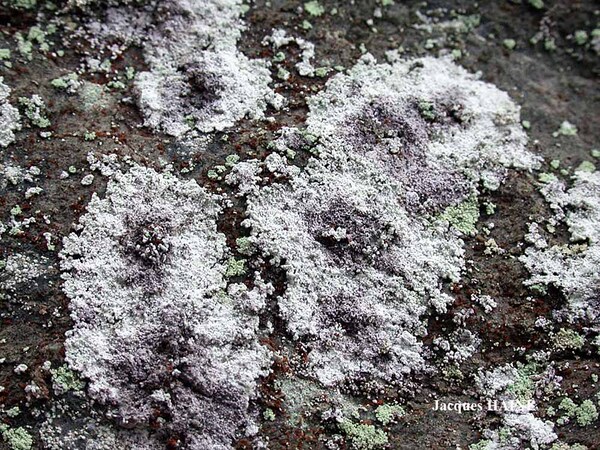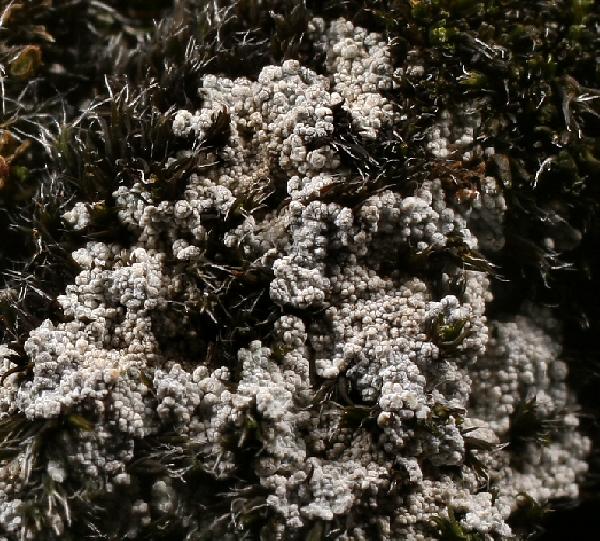Lepraria caesioalba (B. de Lesd.) J.R. Laundon
Lichenologist, 24: 324, 1992. Basionym: Crocynia caesioalba B. de Lesd. - Bull. Soc. Bot. Fr., 61: 84, 1914.
Synonyms: Lepraria neglecta auct. p.p.; Lepraria zonata Brodo; Leproloma caesioalba (B. de Lesd.) M. Choisy
Distribution: N - Frl (Tretiach & Hafellner 2000, Baruffo & al. 2006), Ven (Baruffo & al. 2006), TAA (Baruffo & al. 2006, Nascimbene 2008b), Lomb (Valcuvia & al. 2003, Nascimbene 2006), Piem (Baruffo & al. 2006, Isocrono & al. 2003b, 2006, Obermayer 2013), Emil (Baruffo & al. 2006, Fariselli & al. 2020). C - Tosc (Baruffo & al. 2006, Benesperi & al. 2007), Sar (Nöske 2000, Zedda 2000a, 2002, Baruddo & al. 2006, Cossu 2013, Neuwirth 2018). S - Cal (Baruffo & al. 2006), Si (Baruffo & al. 2006).
Description: Thallus crustose to subleprose, entirely consisting in a mass of convex granules, whitish to pale grey, often darker in central parts, assuming a zoned appearance, marginally well-delimited, usually without lobes but sometimes indistinctly lobulate, forming up to 3 cm wide rosettes, several thalli often merging to cover larger surfaces. The thallus starts developing as isolated, dispersed granules that form piles, or aggregations (best visible along the margins, where the dispersion of the young granules is most readily observed) which eventually overlap and become confluent, giving the false appearance of a continuous thallus in older areas. Granules up to 50 μm thick, but mostly grouped into larger, 80-200 μm wide aggregates, with a well-developed pseudocortex, the surface appearing compact, rarely with very short projecting hyphae. Medulla poorly developed to absent, greyish white, rarely exposed, the hyphae 1.5-5 μm thick, often covered with colourless, irregular, granular crystals. Photobiont chlorococcoid, the cells spherical, up to 19 μm in diam. Spot tests: K+ yellow, C-, KC- or KC+ pale yellow, P+ yellow to orange-red, UV-. Chemistry: atranorin, angardianic or rangiformic acids or both, with or without fumarprotocetraric, psoromic and stictic acids.Note: on silicicolous bryophytes, more rarely directly on siliceous rocks, on surfaces wetted by rain and often close to the soil surface, especially on basal parts of siliceous boulders; more thermophilous than L. alpina, L. borealis and L. neglecta, and certainly more widespread in Italy.
Growth form: Leprose
Substrata: rocks, soil, terricolous mosses, and plant debris
Photobiont: green algae other than Trentepohlia
Reproductive strategy: mainly asexual, by soredia, or soredia-like structures (e.g. blastidia)
Commonnes-rarity: (info)
Alpine belt: extremely rare
Subalpine belt: very rare
Oromediterranean belt: absent
Montane belt: rare
Submediterranean belt: very rare
Padanian area: absent
Humid submediterranean belt: very rare
Humid mediterranean belt: extremely rare
Dry mediterranean belt: absent

Predictive model
Herbarium samples
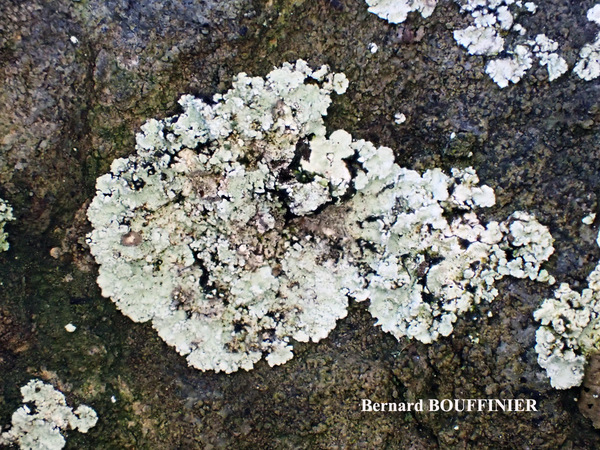
Bernard Bouffinier - Source: http://www.lichensmaritimes.org/index.php?task=fiche&lichen=345&lang=en
France, Landévennec
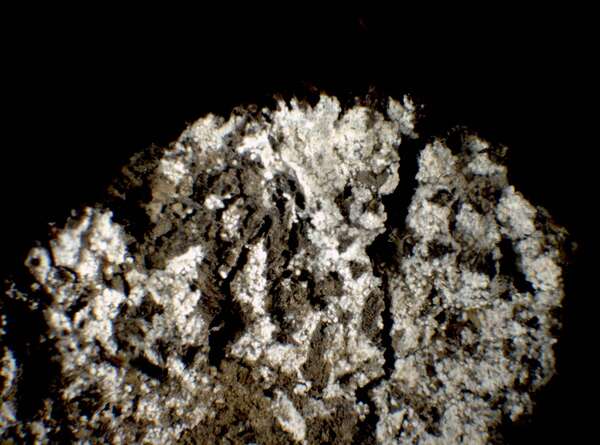

P.L. Nimis; Owner: Department of Life Sciences, University of Trieste
Herbarium: TSB (32750)
2001/12/13


P.L. Nimis; Owner: Department of Life Sciences, University of Trieste
Herbarium: TSB (32750)
2001/12/13
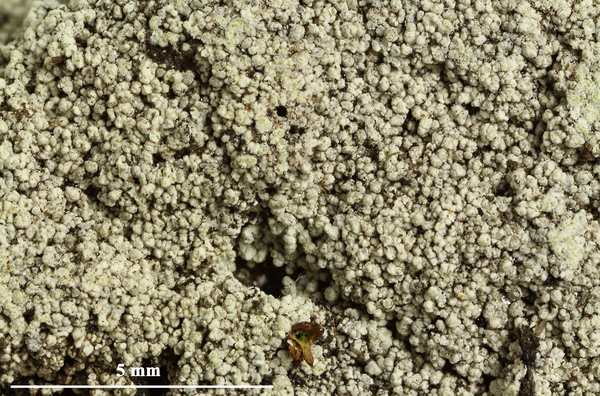

Felix Schumm – CC BY-SA 4.0
[20321], Austria, Salzburg, Eastern Alps, High Tauern, Pinzgau Region (= Zell am See District), Venediger Group, 15.2 km SSE of Oberkrimmel, 1.9 km SE of Innerkeesalm, just belw the alpine cabin „Warnsdorfer Hütte“, 47°05'39'' N, 12°15'03'' E, 2275 m, alpine vegetation, on bryophytes above genissic rocks. Leg. R. Türk (55254), 18.07.2015, det. W. Obermayer, 2017. LICHENOTHECA GRAECENSIS NR. 460.
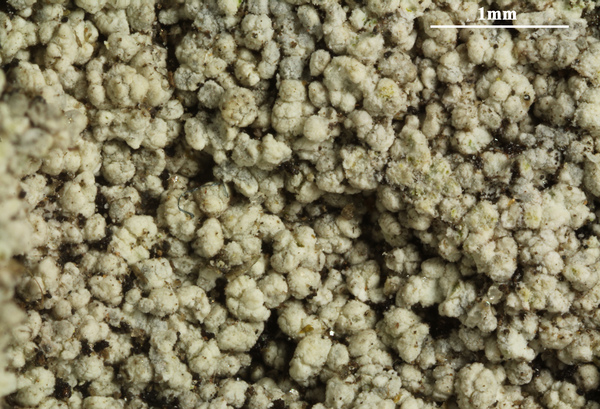

Felix Schumm – CC BY-SA 4.0
[20321], Austria, Salzburg, Eastern Alps, High Tauern, Pinzgau Region (= Zell am See District), Venediger Group, 15.2 km SSE of Oberkrimmel, 1.9 km SE of Innerkeesalm, just belw the alpine cabin „Warnsdorfer Hütte“, 47°05'39'' N, 12°15'03'' E, 2275 m, alpine vegetation, on bryophytes above genissic rocks. Leg. R. Türk (55254), 18.07.2015, det. W. Obermayer, 2017. LICHENOTHECA GRAECENSIS NR. 460.

Harrie Sipman – Source http://www.bgbm.fu-berlin.de/sipman/Zschackia/AegeanLichens/CaloplacaAC.htm - As Caloplaca oasis

Bernard Bouffinier - Source: http://www.lichensmaritimes.org/index.php?task=fiche&lichen=345&lang=en
France, Morgat
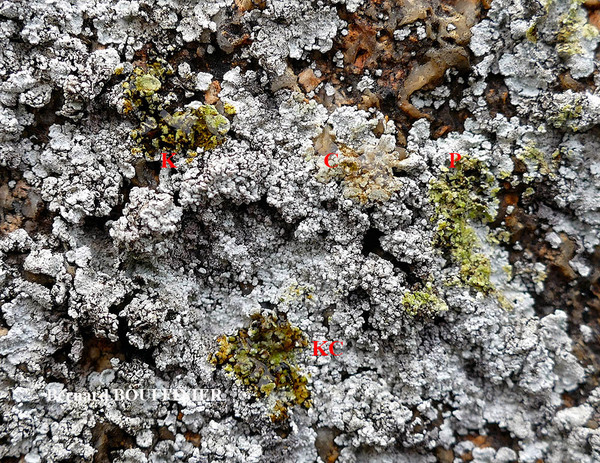
Bernard Bouffinier - Source: http://www.lichensmaritimes.org/index.php?task=fiche&lichen=345&lang=en
France, Pointe du Van
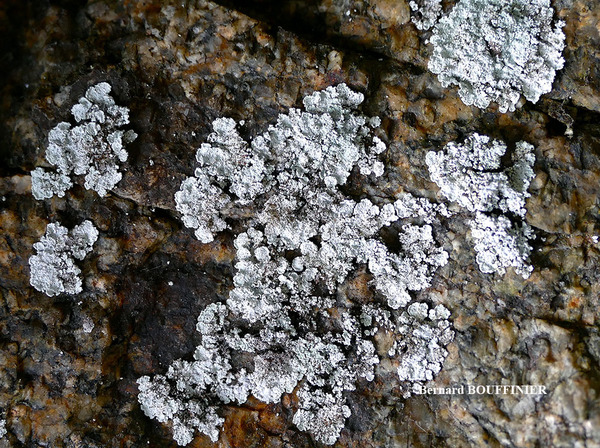
Bernard Bouffinier - Source: http://www.lichensmaritimes.org/index.php?task=fiche&lichen=345&lang=en
France, Pointe du Van
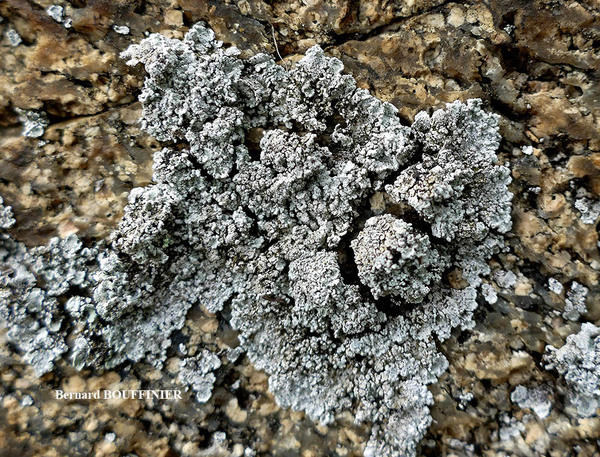
Bernard Bouffinier - Source: http://www.lichensmaritimes.org/index.php?task=fiche&lichen=345&lang=en
France, Pointe du Van
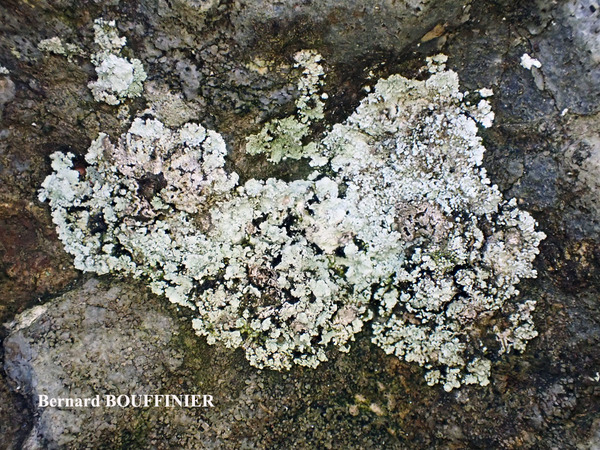
Bernard Bouffinier - Source: http://www.lichensmaritimes.org/index.php?task=fiche&lichen=345&lang=en
France, Landévennec
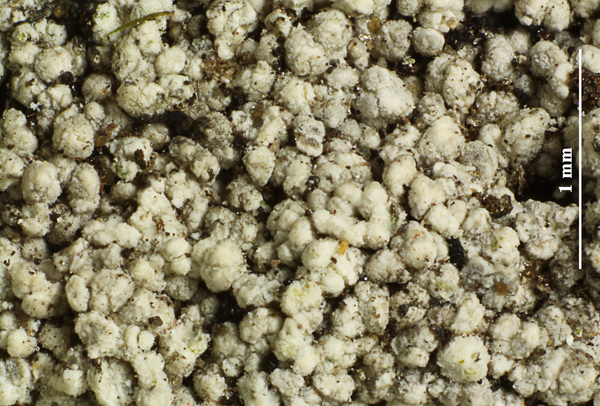

Felix Schumm – CC BY-SA 4.0
[20321], Austria, Salzburg, Eastern Alps, High Tauern, Pinzgau Region (= Zell am See District), Venediger Group, 15.2 km SSE of Oberkrimmel, 1.9 km SE of Innerkeesalm, just belw the alpine cabin „Warnsdorfer Hütte“, 47°05'39'' N, 12°15'03'' E, 2275 m, alpine vegetation, on bryophytes above genissic rocks. Leg. R. Türk (55254), 18.07.2015, det. W. Obermayer, 2017. LICHENOTHECA GRAECENSIS NR. 460.
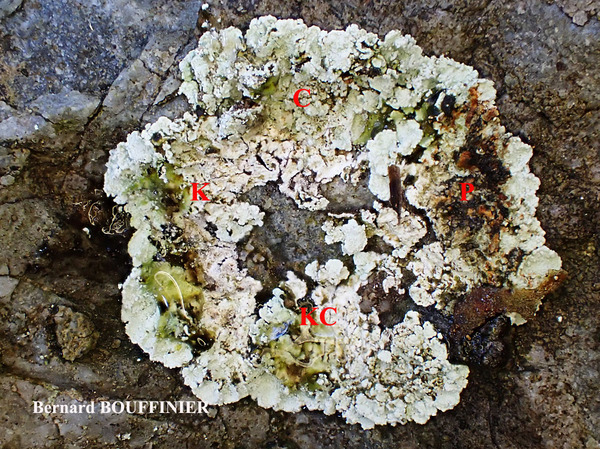
Bernard Bouffinier - Source: http://www.lichensmaritimes.org/index.php?task=fiche&lichen=345&lang=en
France, Landévennec
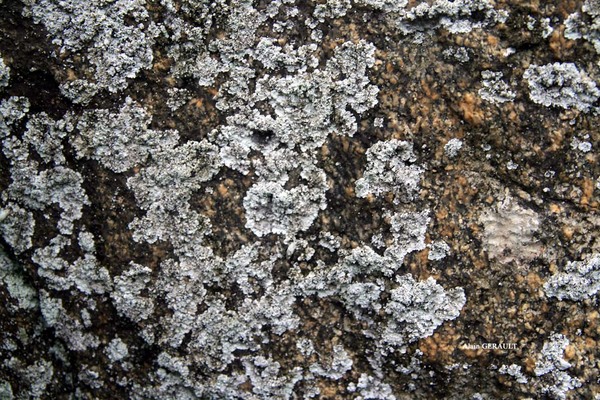
Alain Gerault - Source: http://www.lichensmaritimes.org/index.php?task=fiche&lichen=345&lang=en
France, Pointe du Van
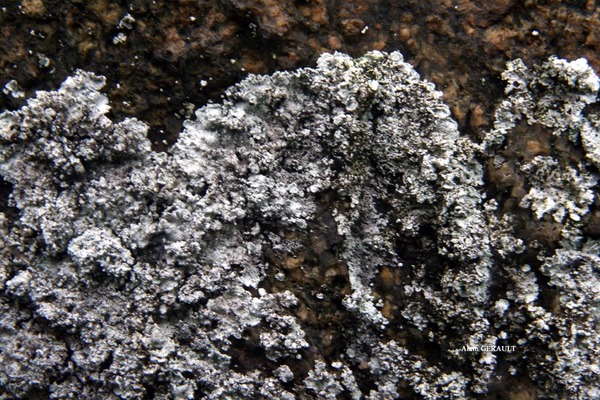
Alain Gerault - Source: http://www.lichensmaritimes.org/index.php?task=fiche&lichen=345&lang=en
France, Pointe du Van
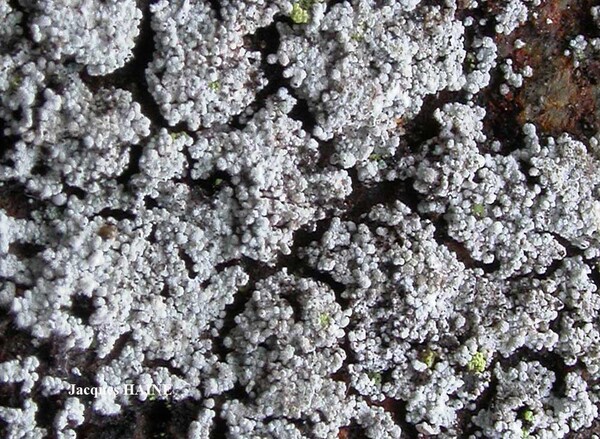
Jacques Haine - Source: http://www.lichensmaritimes.org/index.php?task=fiche&lichen=345&lang=en
France, Ardennes
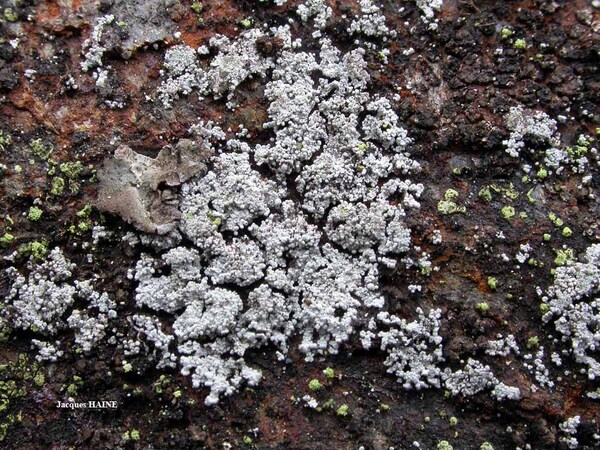
Jacques Haine - Source: http://www.lichensmaritimes.org/index.php?task=fiche&lichen=345&lang=en
France, Ardennes
Growth form: Leprose
Substrata: rocks, soil, terricolous mosses, and plant debris
Photobiont: green algae other than Trentepohlia
Reproductive strategy: mainly asexual, by soredia, or soredia-like structures (e.g. blastidia)
Commonnes-rarity: (info)
Alpine belt: extremely rare
Subalpine belt: very rare
Oromediterranean belt: absent
Montane belt: rare
Submediterranean belt: very rare
Padanian area: absent
Humid submediterranean belt: very rare
Humid mediterranean belt: extremely rare
Dry mediterranean belt: absent

Predictive model
| Herbarium samples |

Bernard Bouffinier - Source: http://www.lichensmaritimes.org/index.php?task=fiche&lichen=345&lang=en
France, Landévennec


P.L. Nimis; Owner: Department of Life Sciences, University of Trieste
Herbarium: TSB (32750)
2001/12/13


P.L. Nimis; Owner: Department of Life Sciences, University of Trieste
Herbarium: TSB (32750)
2001/12/13


Felix Schumm – CC BY-SA 4.0
[20321], Austria, Salzburg, Eastern Alps, High Tauern, Pinzgau Region (= Zell am See District), Venediger Group, 15.2 km SSE of Oberkrimmel, 1.9 km SE of Innerkeesalm, just belw the alpine cabin „Warnsdorfer Hütte“, 47°05'39'' N, 12°15'03'' E, 2275 m, alpine vegetation, on bryophytes above genissic rocks. Leg. R. Türk (55254), 18.07.2015, det. W. Obermayer, 2017. LICHENOTHECA GRAECENSIS NR. 460.


Felix Schumm – CC BY-SA 4.0
[20321], Austria, Salzburg, Eastern Alps, High Tauern, Pinzgau Region (= Zell am See District), Venediger Group, 15.2 km SSE of Oberkrimmel, 1.9 km SE of Innerkeesalm, just belw the alpine cabin „Warnsdorfer Hütte“, 47°05'39'' N, 12°15'03'' E, 2275 m, alpine vegetation, on bryophytes above genissic rocks. Leg. R. Türk (55254), 18.07.2015, det. W. Obermayer, 2017. LICHENOTHECA GRAECENSIS NR. 460.

Harrie Sipman – Source http://www.bgbm.fu-berlin.de/sipman/Zschackia/AegeanLichens/CaloplacaAC.htm - As Caloplaca oasis

Bernard Bouffinier - Source: http://www.lichensmaritimes.org/index.php?task=fiche&lichen=345&lang=en
France, Morgat

Bernard Bouffinier - Source: http://www.lichensmaritimes.org/index.php?task=fiche&lichen=345&lang=en
France, Pointe du Van

Bernard Bouffinier - Source: http://www.lichensmaritimes.org/index.php?task=fiche&lichen=345&lang=en
France, Pointe du Van

Bernard Bouffinier - Source: http://www.lichensmaritimes.org/index.php?task=fiche&lichen=345&lang=en
France, Pointe du Van

Bernard Bouffinier - Source: http://www.lichensmaritimes.org/index.php?task=fiche&lichen=345&lang=en
France, Landévennec


Felix Schumm – CC BY-SA 4.0
[20321], Austria, Salzburg, Eastern Alps, High Tauern, Pinzgau Region (= Zell am See District), Venediger Group, 15.2 km SSE of Oberkrimmel, 1.9 km SE of Innerkeesalm, just belw the alpine cabin „Warnsdorfer Hütte“, 47°05'39'' N, 12°15'03'' E, 2275 m, alpine vegetation, on bryophytes above genissic rocks. Leg. R. Türk (55254), 18.07.2015, det. W. Obermayer, 2017. LICHENOTHECA GRAECENSIS NR. 460.

Bernard Bouffinier - Source: http://www.lichensmaritimes.org/index.php?task=fiche&lichen=345&lang=en
France, Landévennec

Alain Gerault - Source: http://www.lichensmaritimes.org/index.php?task=fiche&lichen=345&lang=en
France, Pointe du Van

Alain Gerault - Source: http://www.lichensmaritimes.org/index.php?task=fiche&lichen=345&lang=en
France, Pointe du Van

Jacques Haine - Source: http://www.lichensmaritimes.org/index.php?task=fiche&lichen=345&lang=en
France, Ardennes

 INDEX FUNGORUM
INDEX FUNGORUM
 GBIF
GBIF
 DOLICHENS
DOLICHENS
